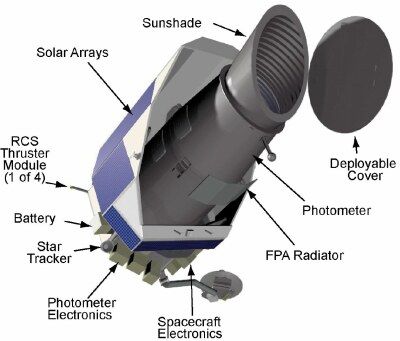
Our New Home
Posted on 12/02/2009 4:57:53 PM PST by KevinDavis
It took humans thousands of years to explore our own planet and centuries to comprehend our neighboring planets, but nowadays new worlds are being discovered every week. To date, astronomers have identified more than 370 “exoplanets,” worlds orbiting stars other than the sun. Many are so strange as to confirm the biologist J. B. S. Haldane’s famous remark that “the universe is not only queerer than we suppose, but queerer than we can suppose.” There’s an Icarus-like “hot Saturn” 260 light-years from Earth, whirling around its parent star so rapidly that a year there lasts less than three days. Circling another star 150 light-years out is a scorched “hot Jupiter,” whose upper atmosphere is being blasted off to form a gigantic, comet-like tail. Three benighted planets have been found orbiting a pulsar—the remains of a once mighty star shrunk into a spinning atomic nucleus the size of a city—while untold numbers of worlds have evidently fallen into their suns or been flung out of their systems to become “floaters” that wander in eternal darkness.
(Excerpt) Read more at ngm.nationalgeographic.com ...

I just wish these writers wouldn’t use the term “New Earth” or “Earthlike”. Science is taking a beating because of the climate scam and people read a title like that then find that the article mentions anything but earthlike planets and the scientists get the blame.
According to planetquest the number of planets found stands at 403 and the number of eartlike planets is listed at 0.
Amazing that we still seem to be unique. God made us special.
We’ll always be unique even if we find other planets with life. Personally I’m not thrilled with the idea of finding intelligent life. I’m far more interested in finding life we can eat, water we can drink, and air we can breathe.
Caprica and Kobol were earthlike planets.

I understand all that, I’m just more concerned with the credibility of the scientists with the word “Earthlike” being thrown around.
What a widely unimpressive and mundane statement.
I am very confident. NASA/Kepler and the data it sends back will make this a reality.
The transit method that Kepler telescope uses also makes it possible to study the atmosphere of the transiting planet. When the planet transits the star, light from the star passes through the upper atmosphere of the planet. By studying the high-resolution stellar spectrum carefully, one can detect elements present in the planet’s atmosphere. A planetary atmosphere (and planet for that matter) could also be detected by measuring the polarisation of the starlight as it passed through or is reflected off the planet’s atmosphere.
I hope so as well. With a little luck it will inspire us to try harder.
I don’t know if Kepler will look at Alpha Centauri but I’ve read some scientists theorize that its a prime candidate for small rocky planets.
I think that Alpha Centuri, Tau Cei, and Zeta Reticuli are prime candidates.
The closer the better. Maybe we’ll see some real propulsion research that will put the Alpha Centauri system with in decades rather than thousands of decades. Even 1/8 or 1/16 light speed would put it within reasonable reach.
I agree. Maybe through the use of wormholes. Though, I prefer use wormholes to travel interdimensionally.
Hate to say it, but that National Geographic article was 90% pablum. The magazine is overproduced — pictures too beautiful and writing too slick. It acts like it’s a great magazine. It’s stuck on itself. Also it shoves a lot of environmental stuff at us.
And that was before Prop 8!
It’s probably the reporters assigning these names to these exoplanets, but scientists and reporters should be more careful with the terms they use.
If it’s a rocky world at 2,000 degrees Fahrenheit, that ain’t “Earthlike”
One more thing about National Geographic. Let’s see when they report on climategate, or even report that new analysis of the data shows reduced evidence of a warming trend.
Exactly.
Some of the large gas giants they’ve found are in the habitable zone which makes me wish we could get an idea about moons they may have around them.
Have you seen the interactive atlas planetquest has now? Its the 3-D new worlds atlas and its pretty cool. It shows where the star is in relation to us and you can zoom in on their planetary systems and get other info.
http://planetquest.jpl.nasa.gov/atlas/atlas_index.cfm
Disclaimer: Opinions posted on Free Republic are those of the individual posters and do not necessarily represent the opinion of Free Republic or its management. All materials posted herein are protected by copyright law and the exemption for fair use of copyrighted works.